When I first started to think about this trip to Nice, somehow I got this idea that there was a Serbian Orthodox church there. Then I searched on the internet and as it turned out there is indeed such a church, albeit in a somewhat unusual form. Namely, there are French Orthodox Christians and in Nice they dispose with a large room in a building that is entered directly from the street. This room has been converted into a church. In other words, nothing suggests from the outside that there is a church here, but there is.
When I went to the port in Nice the previous day, I remembered that this church was somewhere in this area, so I walked around the streets there a little, but clearly I had no real idea where the church was, at what address or what the building actually looked like. A little later, back in the flat that I rented during my stay, I checked on the internet again and there I saw that the church even had its page on the FB, so I looked it up there and as it turned out they had a service the following day at 10.30.
I must admit that I had never attended a Sunday service of my own will (admittedly, I went the church for the purpose once when I kept company to my friend Milana in New York). I did to go for weddings and funerals, but not for the regular service. And then I thought – why not?
And so on this day, without too much hurry, I headed on foot towards the Old Port of Nice. Along the way I admired the buildings that Nice is full of and that only show how much this city, as well as this entire region, have been attractive for wealthy visitors, residents and construction investors.
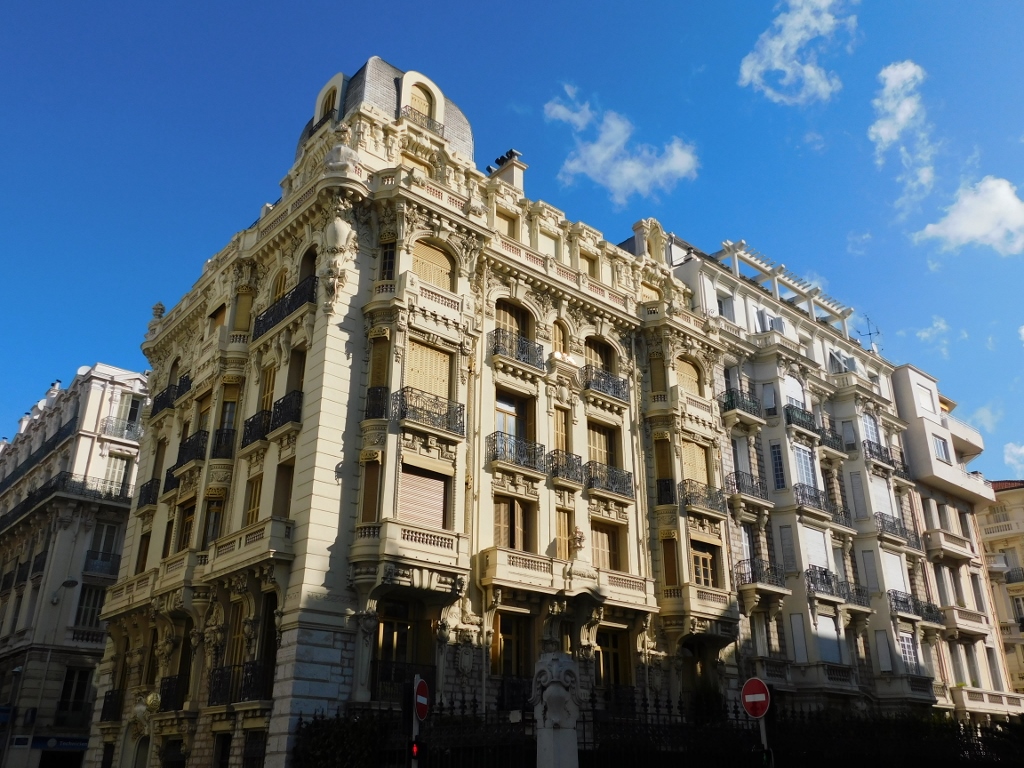 Nice, a detail
Nice, a detail
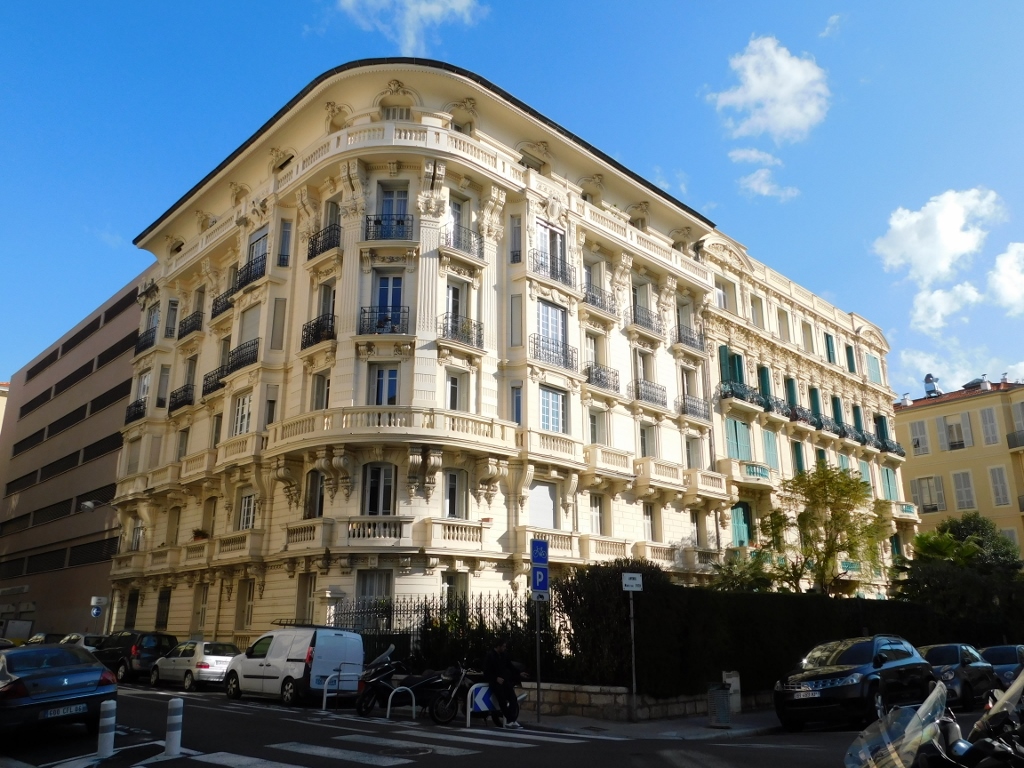 Nice, a detail
Nice, a detail
Needless to say, where there’s money, there’s trade and so I also walked past the beautiful building of the Chamber of Commerce.
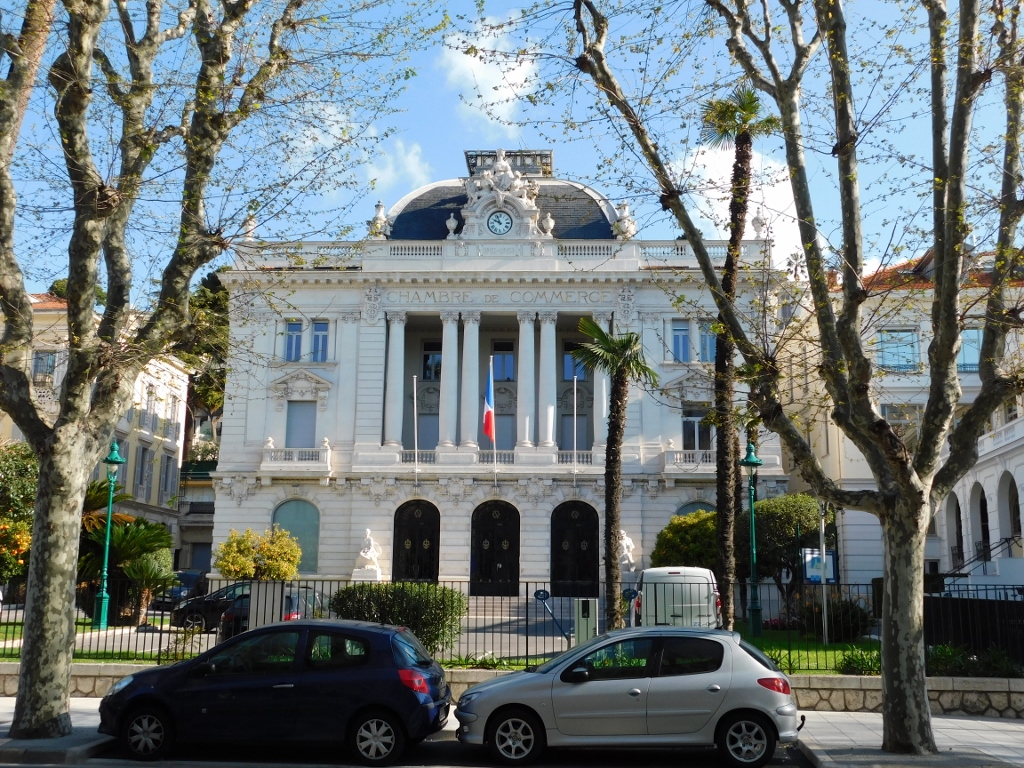 Chamber of Commerce in Nice
Chamber of Commerce in Nice
But, Nice and its residents also feel the need to show that in their city they do not live (only) in the past, but that they follow some very contemporary trends. So, near a street corner, I could take a photo of a large sculpture “Square head” (Tête Carrée), 30 m high, within which there are in fact the administrative offices of the municipal library. A little farther away there is also the building of the Modern and Contemporary Art Museum – MAMAC (Musée d’Art Moderne et d’Art Contemporain).
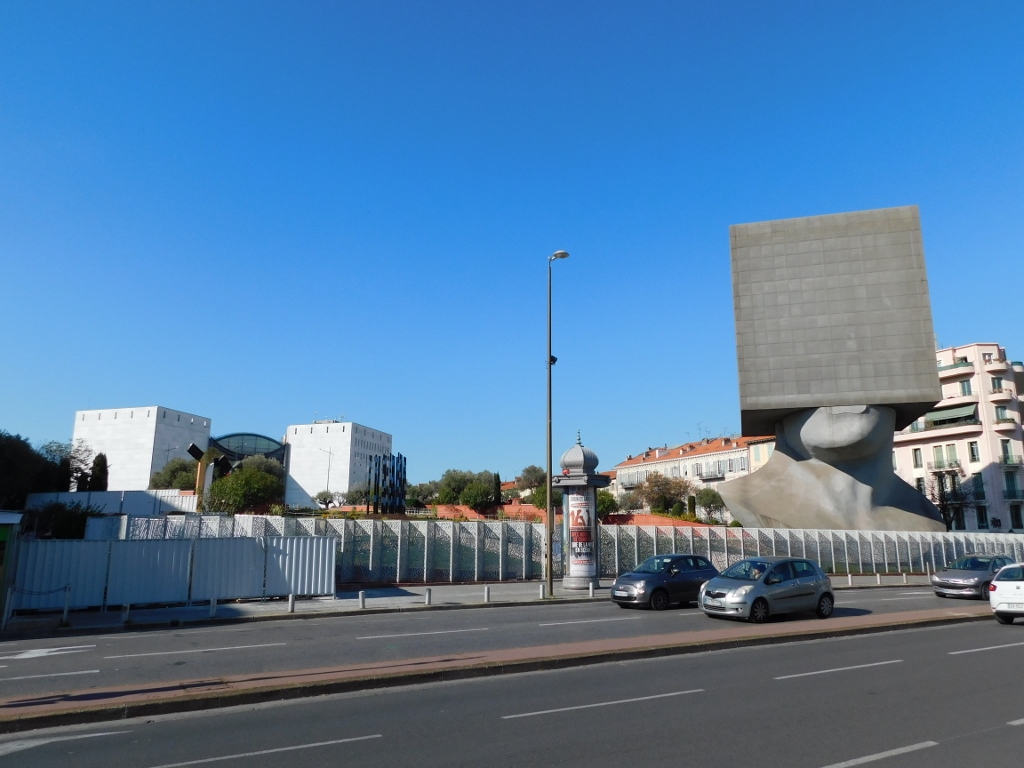 Nice, contemporary parts of the city
Nice, contemporary parts of the city
Soon I also walked near the Garibaldi Square.
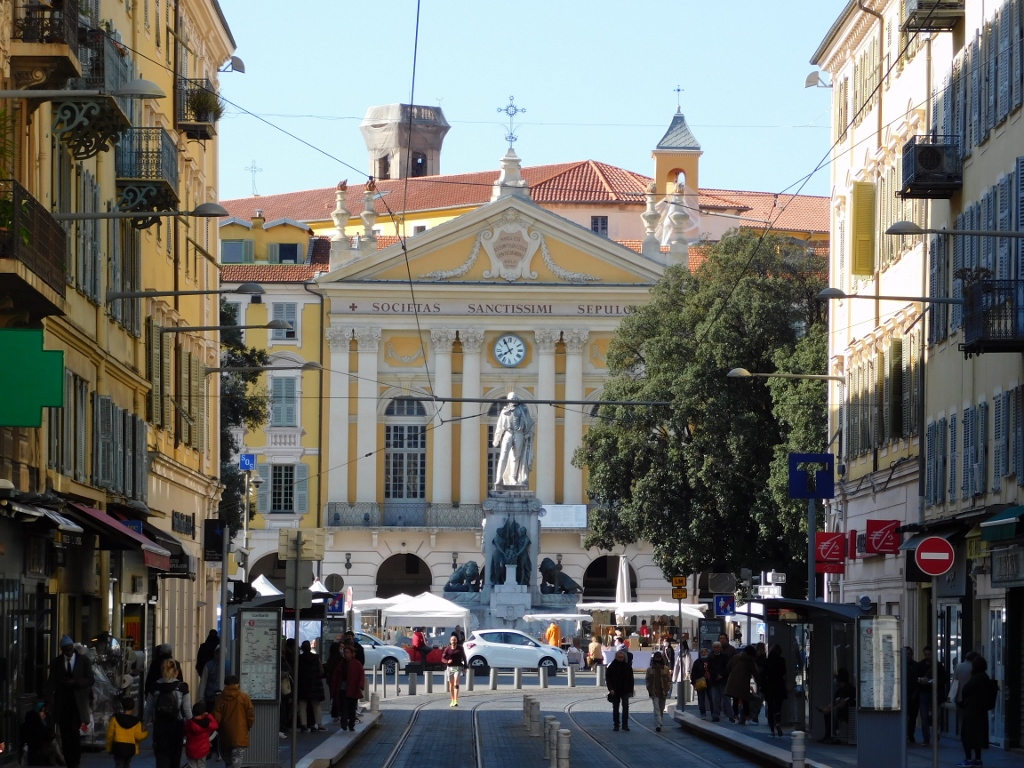 Garibaldi Monument and Square
Garibaldi Monument and Square
When I was searching for the place where the Serbian orthodox church in Nice was, I realised that there was a bakery in its vicinity with excellent artisanal butter croissants, so I had the idea of going there for breakfast before going to the church. However, as it turned out, this bakery did not work on Sundays, so I just continued to the church.
I have already mentioned that the Serbian church in Nice is situated on the premises on the ground floor of a residential building. Its address is 3 Rue Fodéré and if I didn’t have this address, I wouldn’t know where to look for it. In the photo below, the entrance into the church is the wooden door that is second from the left (admittedly, there is a framed information sheet to the effect on the door).
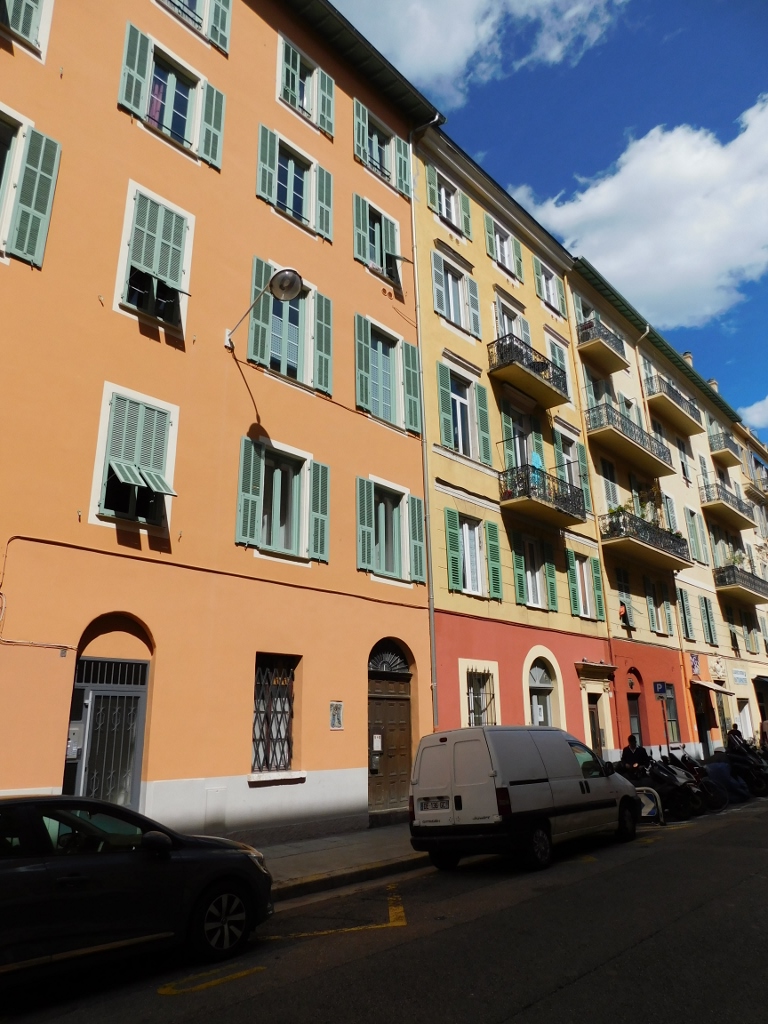 Serbian orthodox church in Nice
Serbian orthodox church in Nice
Regardless of the information sheet, the door was closed and I hesitated for a moment, but then I grabbed the door handle and entered. The service had still not started and the priest was rehearsing chanting with a couple of women.
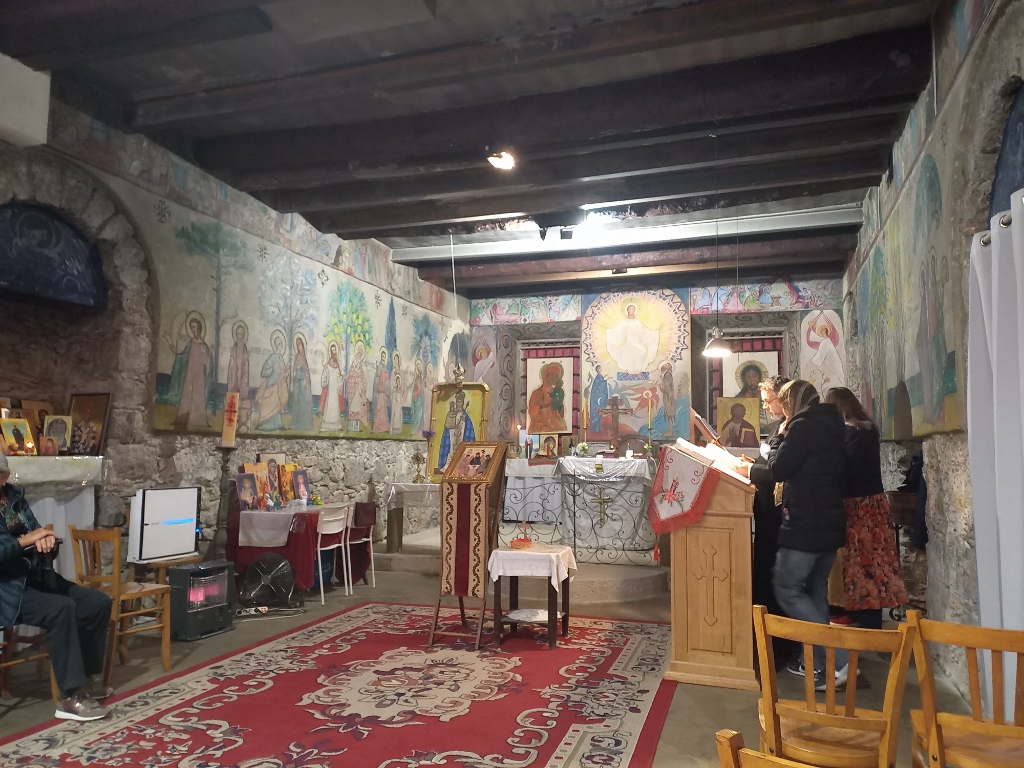 Serbian orthodox church in Nice
Serbian orthodox church in Nice
The church is dedicated to the Dormition, but the actual translation of the name should the Assumption of the Theotokos. In fact, it is marked as a parish and not a church, but I must say that I do not know what the practical difference is.
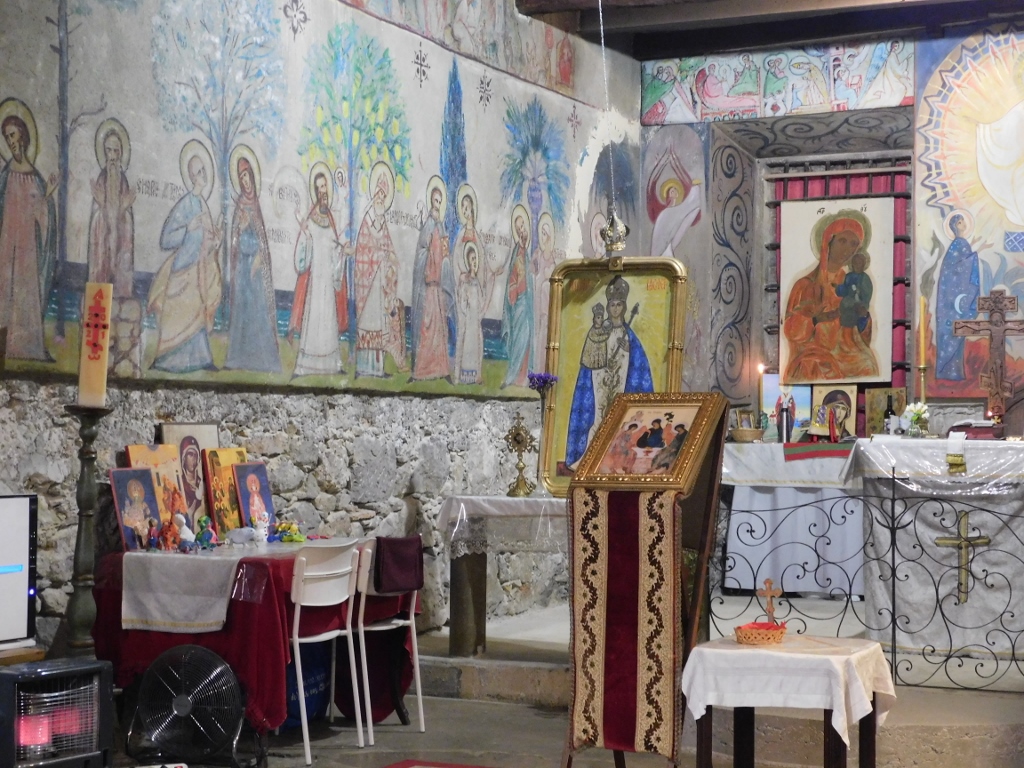 Serbian orthodox church in Nice
Serbian orthodox church in Nice
I found it interesting that before the service started I was approached by a young man and we spoke for a short while. He told me to make sure that I stayed till the end since they hanged around afterwards, while taking coffee or tea, etc.
And so I did. When the service was over, I started to talk with a man who came here from Cannes, while the young man from the beginning asked me if I would take coffee or tea. Later I also talked with the priest’s wife (Serbian orthodox priests are not celibates) and so we “agreed” that we would see each other again in a few days at a service celebrating the feast of the Annunciation. Namely, the priest had reminded all those present that the important feast would be celebrated in a few days and I found this additionally interesting because on this occasion our priest was to join his Russian colleagues, since the liturgy dedicated to the Annunciation was to be celebrated at the Russian orthodox church of St. Nicholas in Nice. My plan was anyway to go and visit this church since it is among the sites of Nice that are considered to be most interesting and this was certainly a much better version than an ordinary tourist visit.
Taking into account that the service lasted for good two hours, afterwards I walked to the not too distant Garibaldi Square where I sat in one of the several restaurants with terraces that are located at the square. Although there is the famous Nicoise Salad, I thought that I could easily make it back at home, so I opted for an octopus salad, with a (for me) mandatory Panaché.
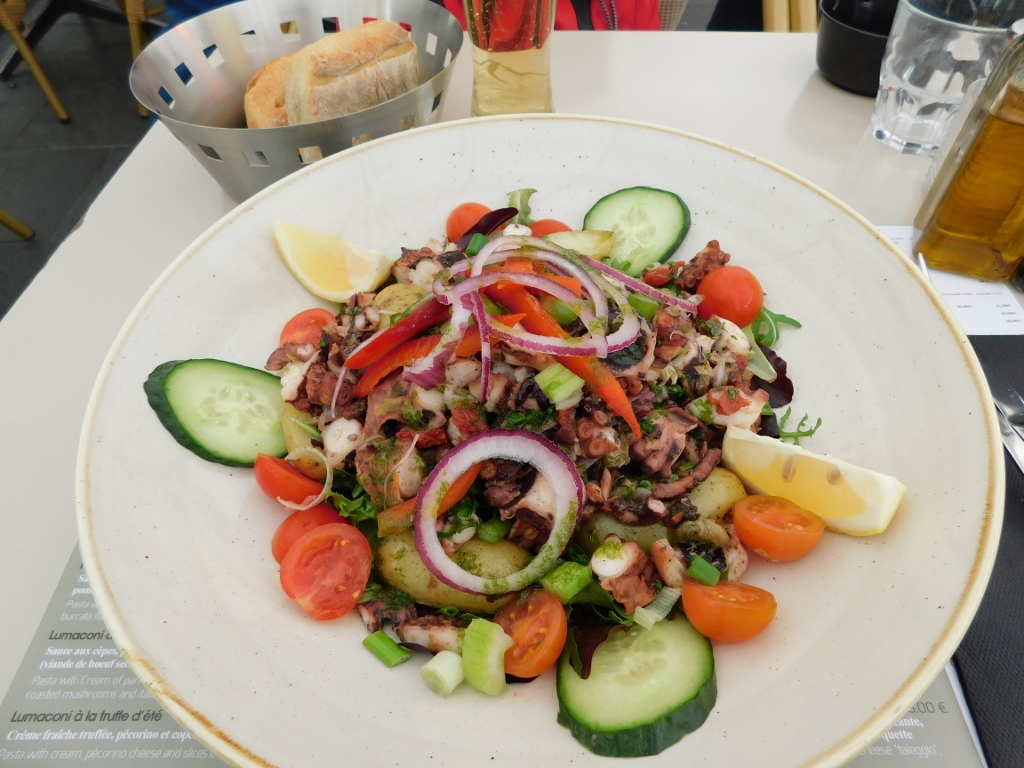 Octopus salad
Octopus salad
The octopus salad was great and I could certainly not make it in Belgrade primarily because I don’t have an access to a sufficiently fresh octopus, but upon my return home I did make my own version of the Nicoise Salad. Here is the result and the recipe...
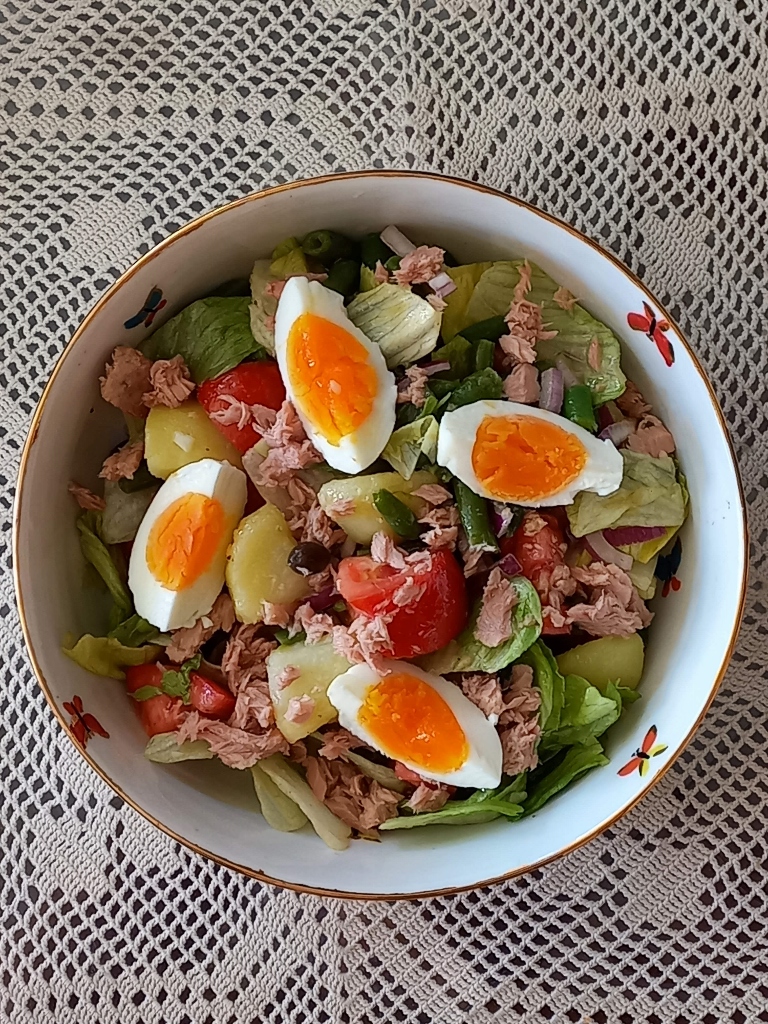 Nicoise Salad served in a porcelain bowl which I made myself
Nicoise Salad served in a porcelain bowl which I made myself
NICOISE SALAD
- 1 larger potato
- 125 g green beans
- a half of an onion
- 1 tomato
- 100 g lettuce
- black olives optional
- 150 g canned tuna
- 1-2 boiled eggs
Boil the diced potato in salted water, then strain it and leave to cool completely. Do the same with the green beans. If you are experienced and know how long it takes to boil potatoes and green beans, you can boil them together.
In the meantime, slice the onion thinly. The tomato should be cut into smaller pieces, while the lettuce (not some delicate variety, but rather Romaine or Iceberg, for instance) should be cut into larger chunks.
Once the potato and the green beans have cooled down, carefully join together all the ingredients (except the boiled eggs) using the dressing made of the following ingredients: 1 clove of finely grated garlic, 1/2 tsp each of finely chopped fresh basil, thyme and oregano, 1 tsp of mustard, some salt and pepper, 1 tbsp of vinegar or lemon juice and 3-4 tbsp of olive oil. The quantities of these ingredients may be adjusted to one’s individual taste.
Finally, decorated the salad with eggs cut in quarters.
After this very pleasant break when I had lunch, I headed on foot northwards. Some 2.5 km farther away, there were a couple of places I wanted to visit. One of those places was the Matisse Museum (Musée Matisse) that I actually first came across and that is located right next to the excavations of the Roman baths of Cimiez.
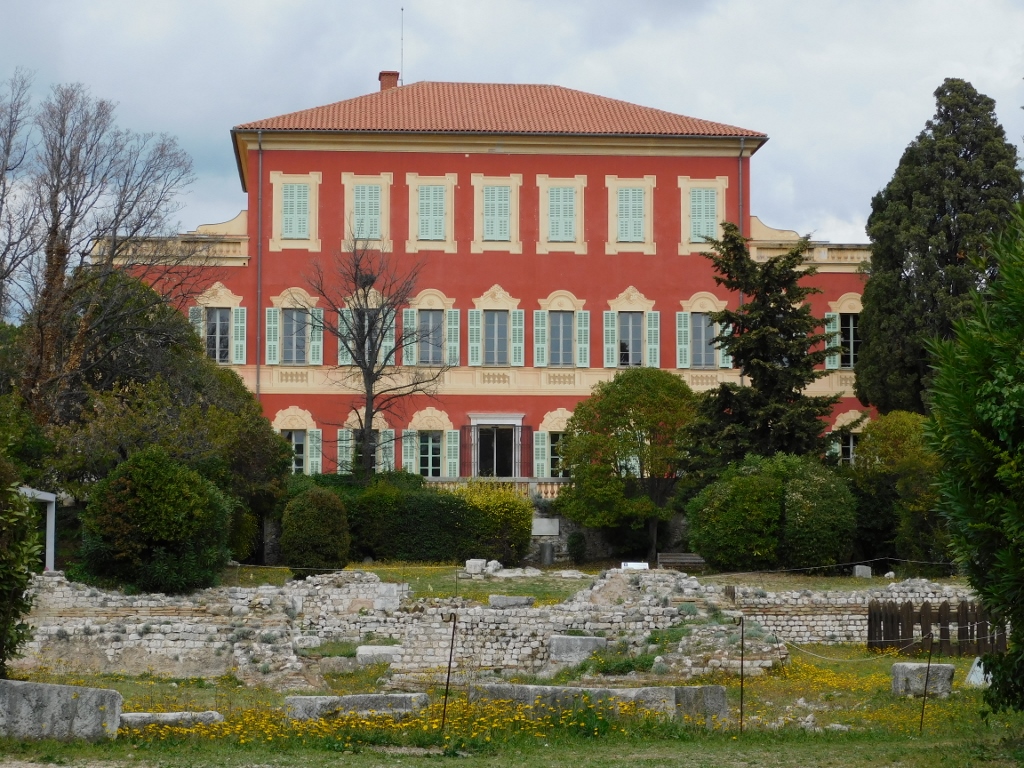 The Matisse Museum and the Roman baths of Cimiez
The Matisse Museum and the Roman baths of Cimiez
However, I first went to the Cimiez Monastery and its famous garden that was originally made in 1546.
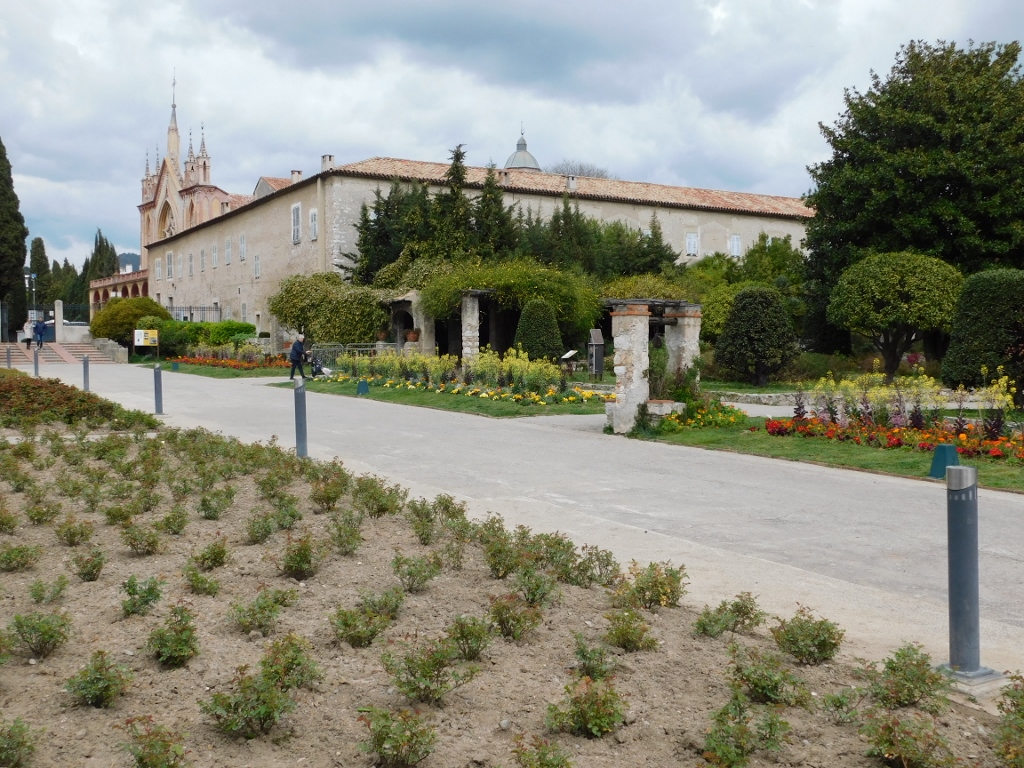 Cimiez Monastery
Cimiez Monastery
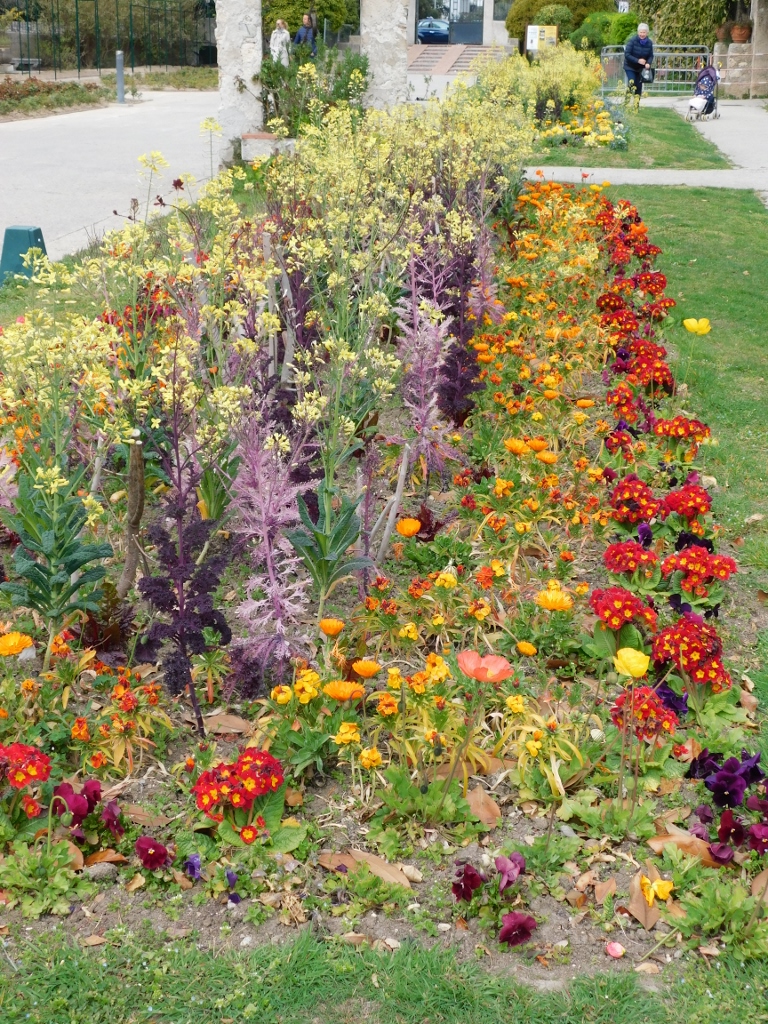 Cimiez Monastery’s garden, a detail
Cimiez Monastery’s garden, a detail
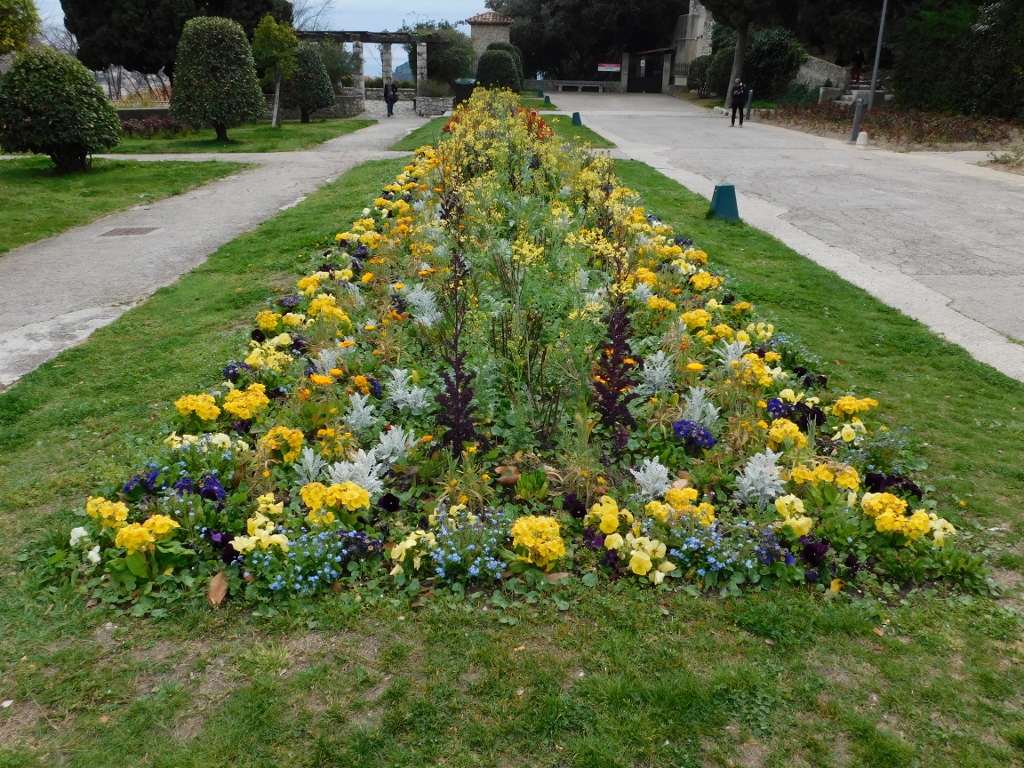 Cimiez Monastery’s garden, a detail
Cimiez Monastery’s garden, a detail
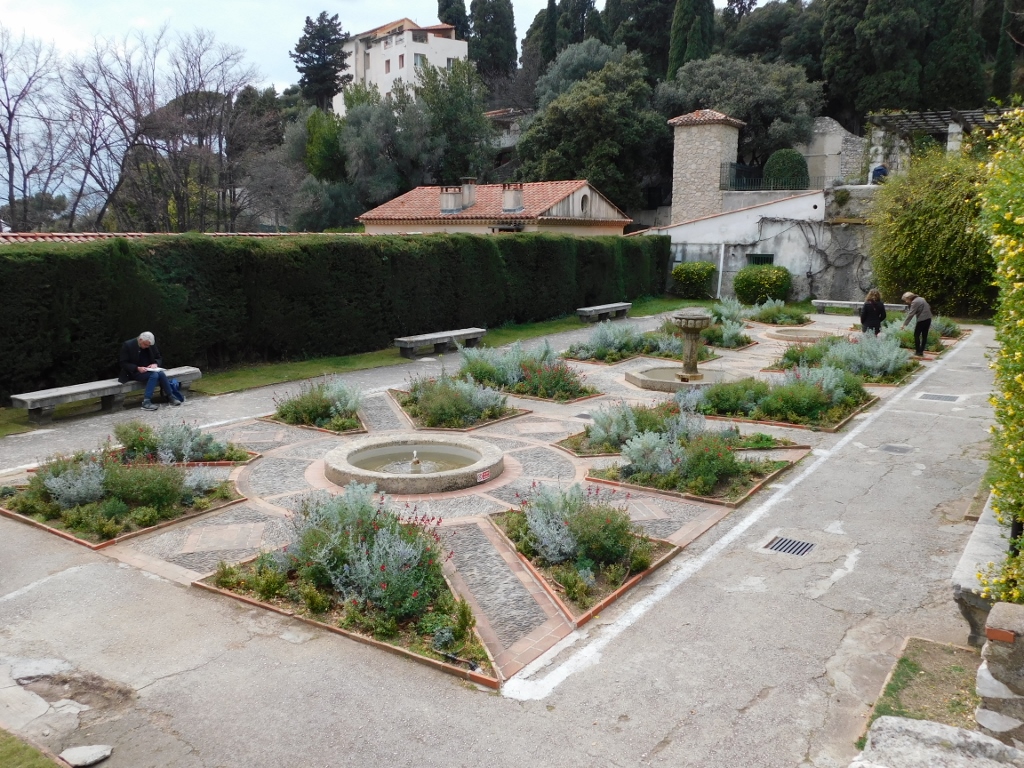 Cimiez Monastery’s garden, a detail
Cimiez Monastery’s garden, a detail
I think that one should definitely come here, not only because of this pretty garden and certainly because of the monastery, but because there is a very nice view at the east sections of Nice.
 View from the Cimiez Monastery’s garden
View from the Cimiez Monastery’s garden
And one can for sure see a part of the Mediterranean Sea.
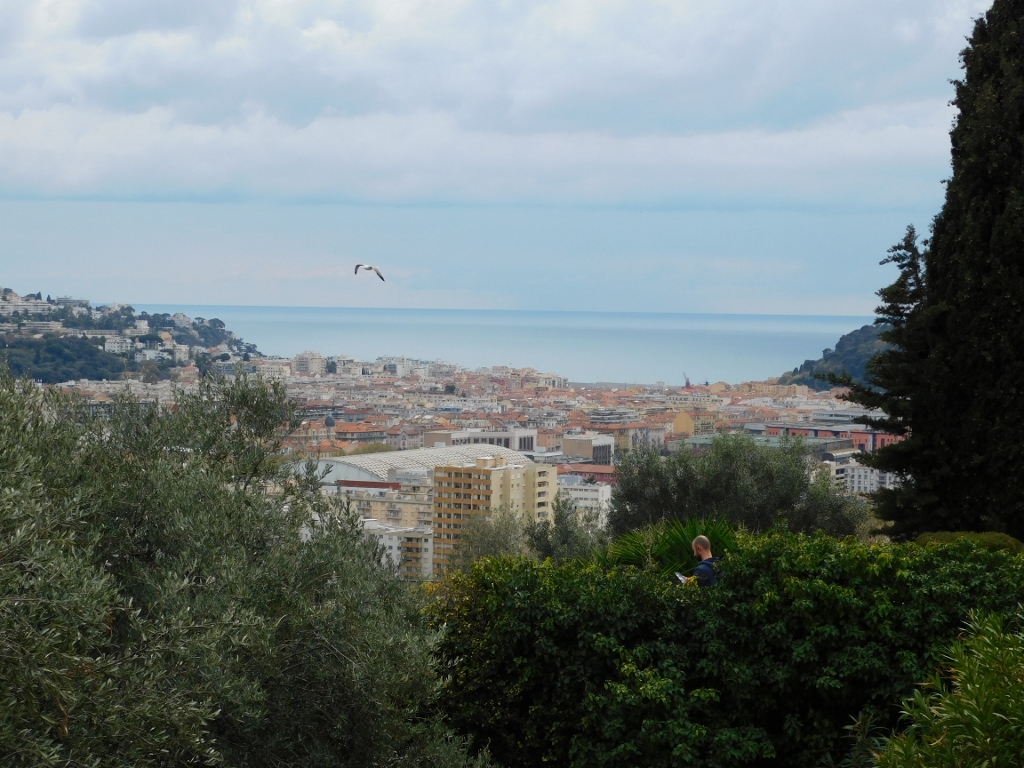 View from the Cimiez Monastery’s garden, a detail
View from the Cimiez Monastery’s garden, a detail
The Cimiez Monastery also includes the Church of Our Lady of the Assumption. It was founded in the 9th century, but at some point it changed its function (it served as a hospital). Over time, the monastery kept being adapted and some additions were built, while from the 16th century Franciscan monks live in it.
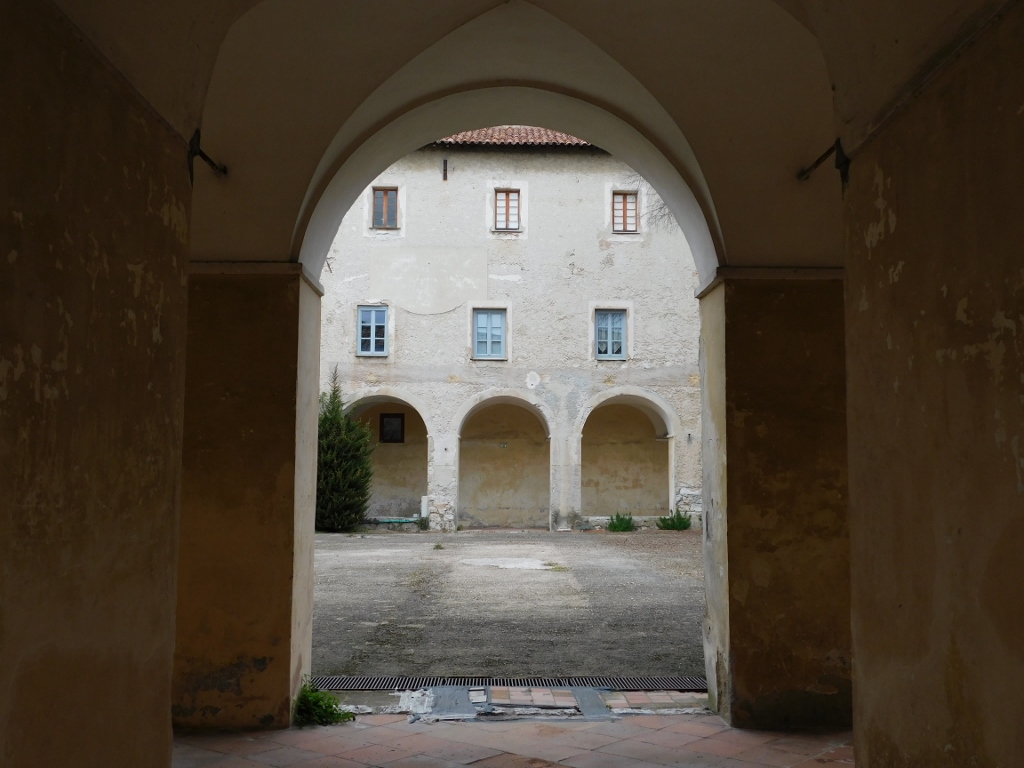 View at the cloister of the Cimiez Monastery as seen from a flanking gate
View at the cloister of the Cimiez Monastery as seen from a flanking gate
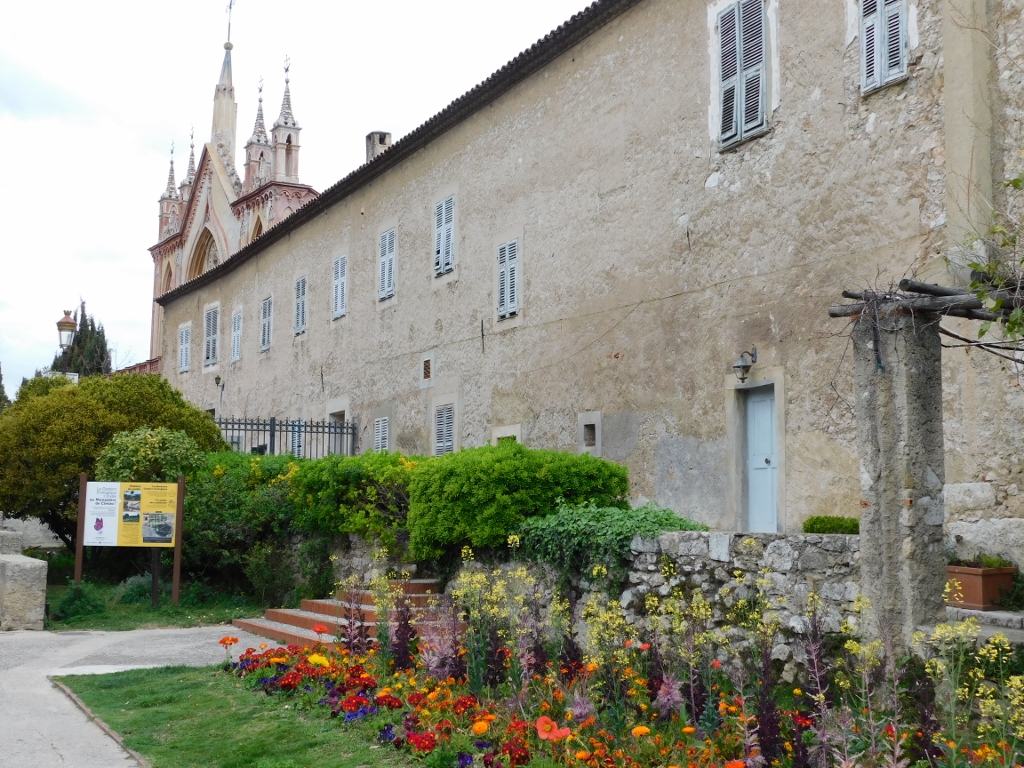 Cimiez Monastery
Cimiez Monastery
Within the monastery there is also the Franciscan Museum, while an information board hanged on the wall of the porch that is a part of the front facade says that the church was built on the ruins of a temple dedicated to Roman goddess Diana.
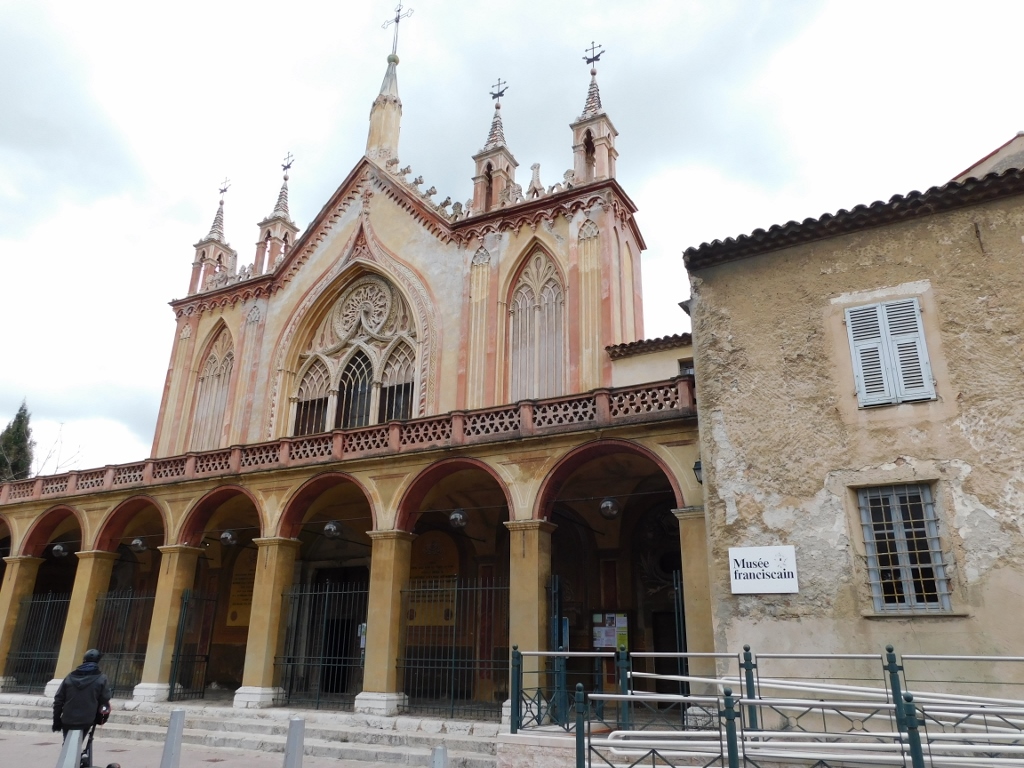 Cimiez Monastery
Cimiez Monastery
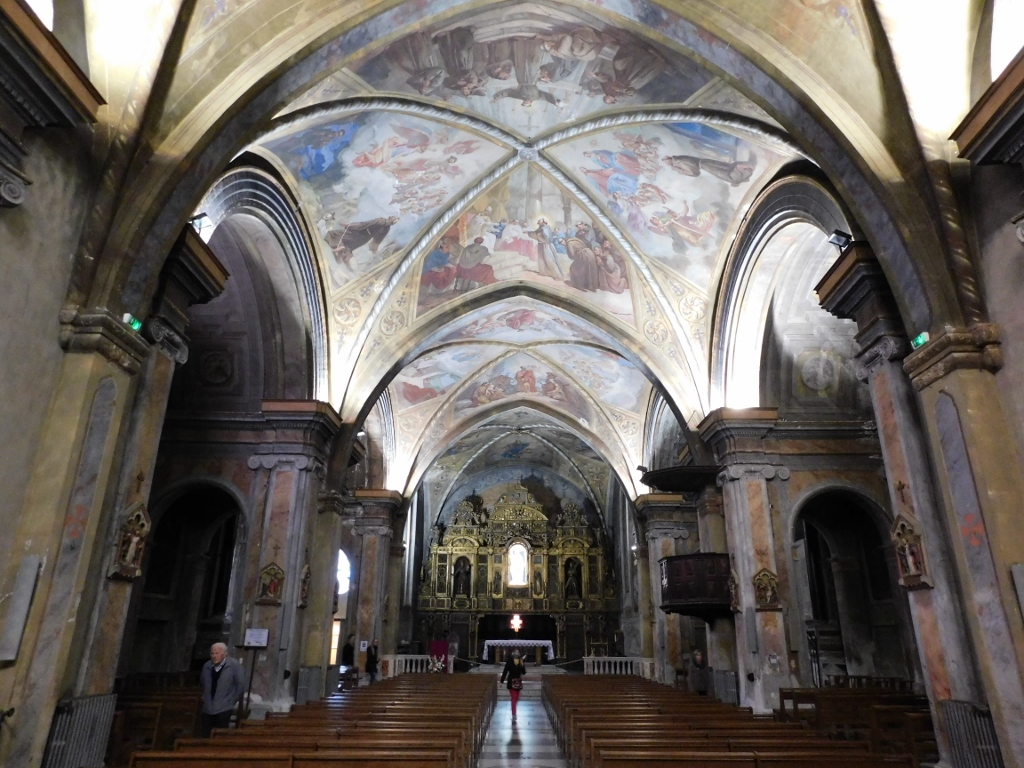 Cimiez Monastery, the interior of the Church of Our Lady of the Assumption
Cimiez Monastery, the interior of the Church of Our Lady of the Assumption
Close to the monastery there is also a cemetery where there is the grave of Henri Matisse, but instead of going in that direction, I headed through the Garden of the Arenas of Cimiez (Jardin des Arènes de Cimiez) towards the Matisse Museum. The garden, or better said the park, got its name on account of the remains of an amphitheatre (an arena) from the Roman town of Cemenelum. Among other sections, the park also includes a spacious area in the shape of an olive grove and this was precisely where I strolled.
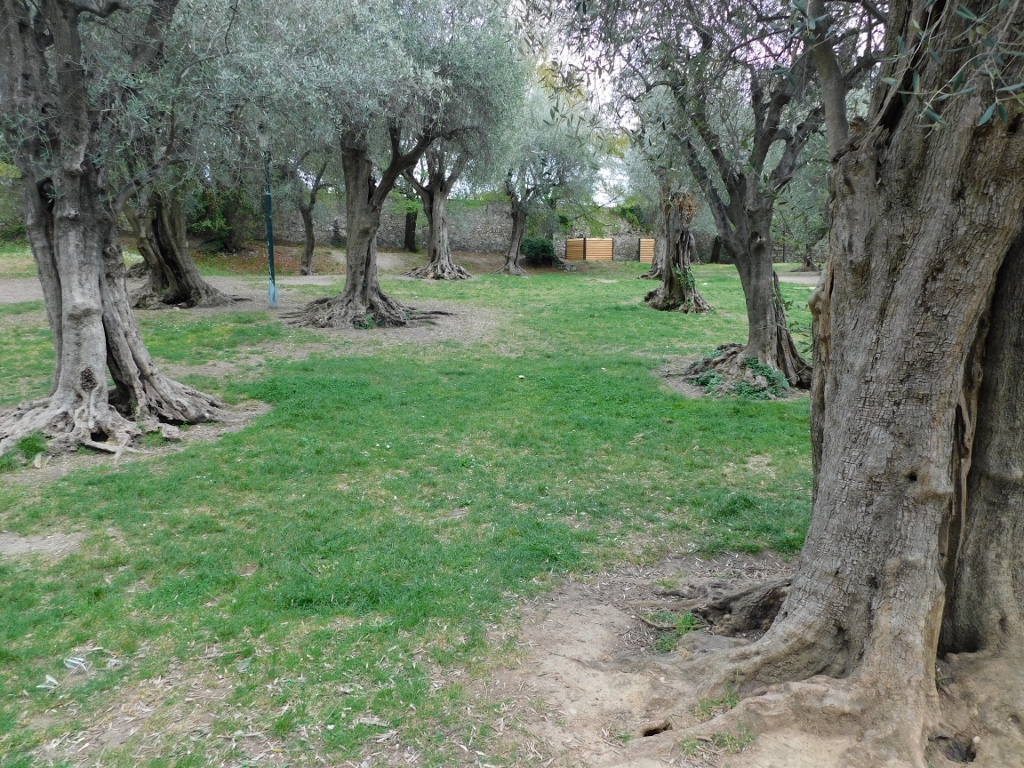 Olive grove within the Garden of the Arenas of Cimiez
Olive grove within the Garden of the Arenas of Cimiez
In addition to the smaller amphitheatre that I did not visit and the olive grove through which I walked, the park also includes a section where the local residents play boules or bocce.
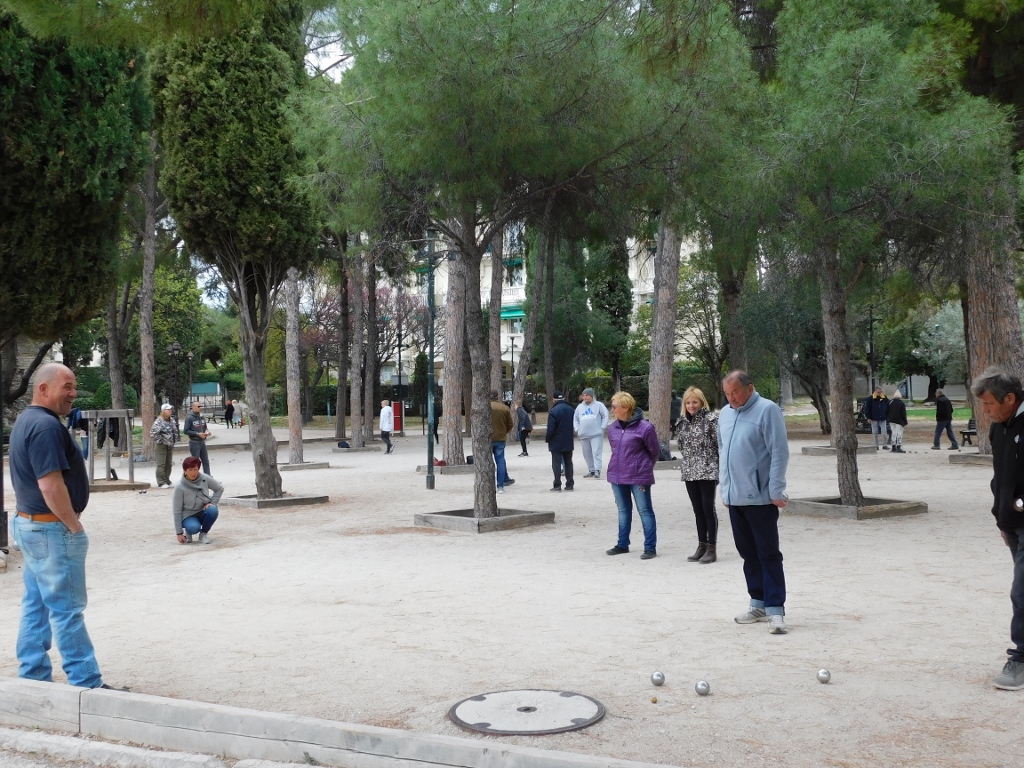 Playing boules or bocce in the Garden
Playing boules or bocce in the Garden
The main reason why I did not go to the arena was that I wanted to go to the museum, after which I was to walk back to the centre of the city and the flat at which I was staying. I did not know how long this would take and I was already tired. So, I decided not to dwell in the park for too long. Still, beside the museum itself there are remains of the Roman Baths of Cimiez (Thermes romains de Cimiez). I did not visit them either, but at least I had a look at them from a terrace that is located beside the museum building.
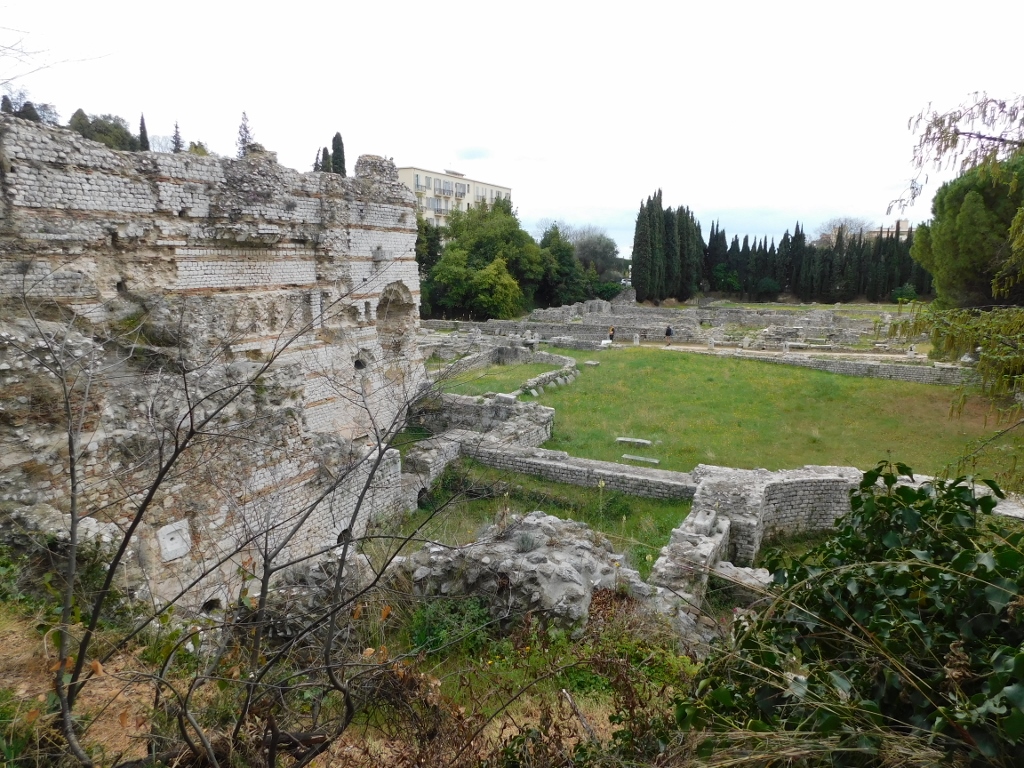 Remains of the Roman Baths of Cimiez
Remains of the Roman Baths of Cimiez
This site includes a thermae complex from the Roman town of Cemenelum that was situated on the hop of the hill which nowadays hosts the part of Nice called Cimiez.
 Remains of the Roman Baths of Cimiez
Remains of the Roman Baths of Cimiez
The Matisse Museum is located in a spacious villa from the 17th century that is at the level of the bocce terrain, but “a floor above” the level of the Roman baths, so to speak.
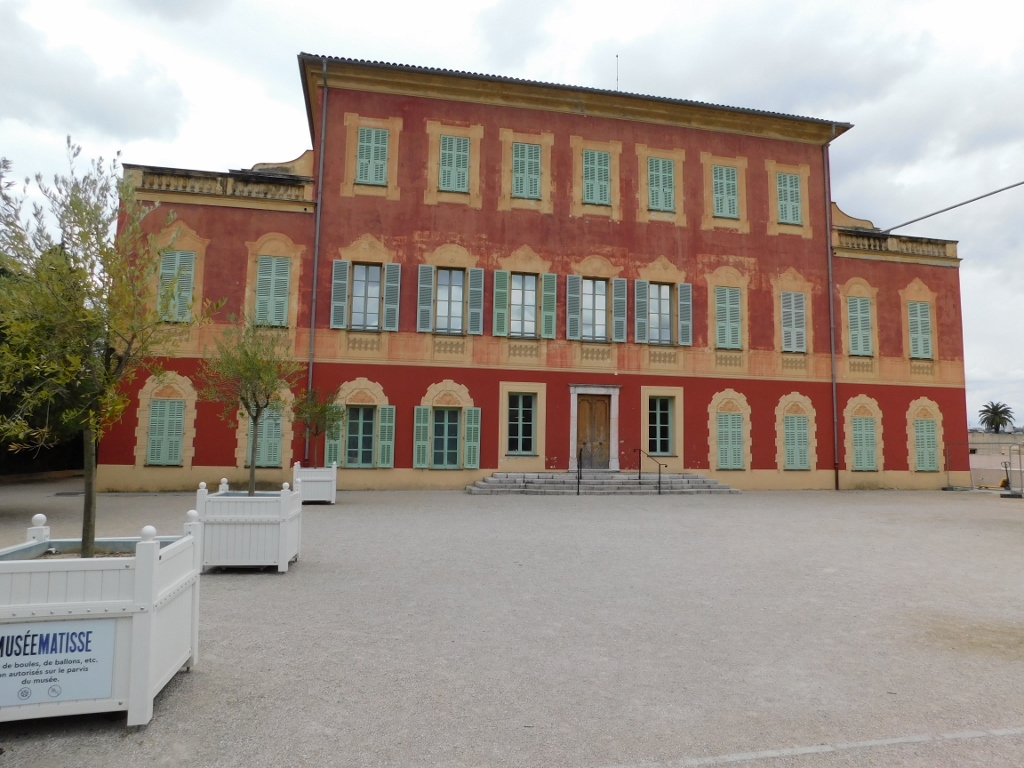 The Matisse Museum
The Matisse Museum
Still, it is interesting that the museum is not entered from the level seen in the photo above, but from a side, going down a wide staircase leading to the basement where there is the official entrance into the museum and where the tickets are bought.
Henri Matisse (1869-1954) was a French painter and sculptor, although he worked in other art fields as well. He belonged to the artistic style called Fauvism that endured only for a short period of time and that was led by a small number of artists. Nonetheless, it is considered the first significant event in the 20th century art. Matisse was born in the north of France, but in 1917 he moved to Nice. Practically he spent the rest of his life living and working at the French Riviera, either in Nice itself or in its environs. Some of the most famous pieces by Matisse may be seen in this museum, but here is my small selection of sorts:
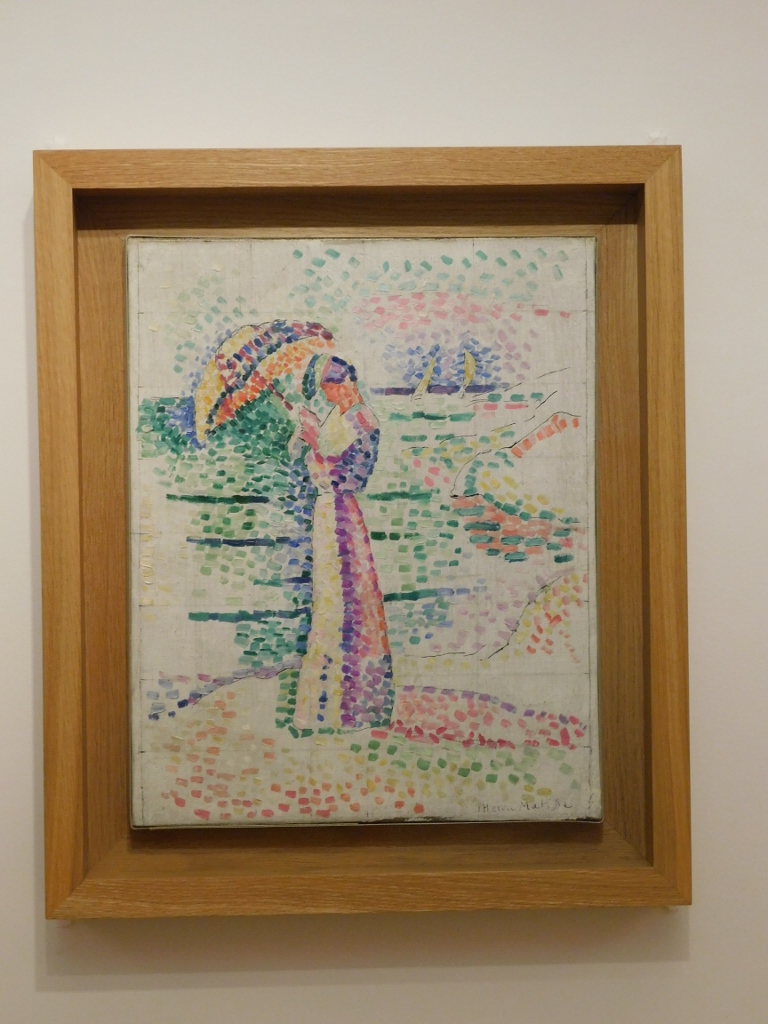 Figure with an Umbrella, 1905
Figure with an Umbrella, 1905
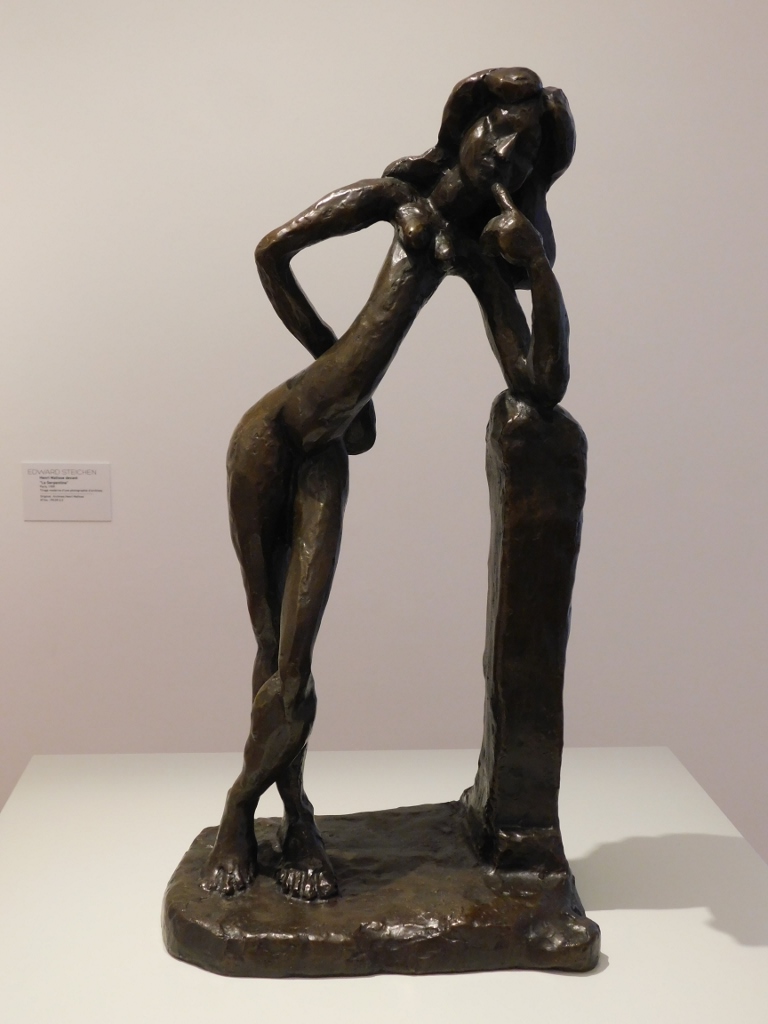 La Serpentine, 1909
La Serpentine, 1909
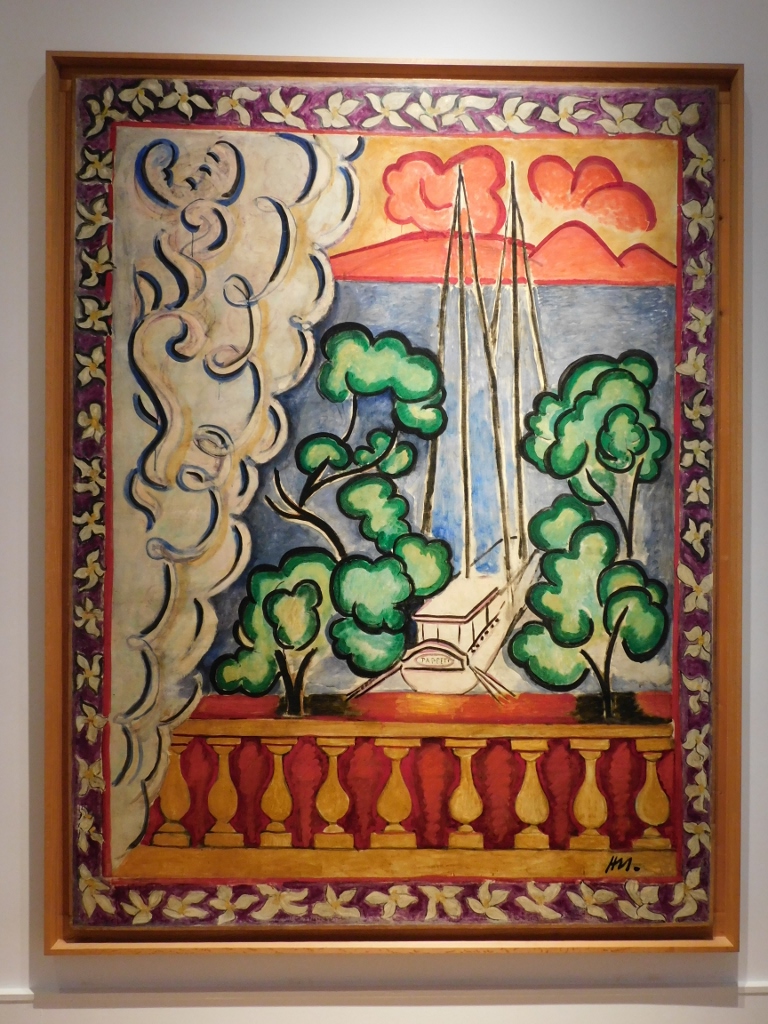 Papeete – Tahiti, 1935
Papeete – Tahiti, 1935
During 1941, Matisse had a surgical treatment of his cancer and afterwards he had to use a wheelchair, so he started to make cut paper collages which he called the “painting with scissors.”
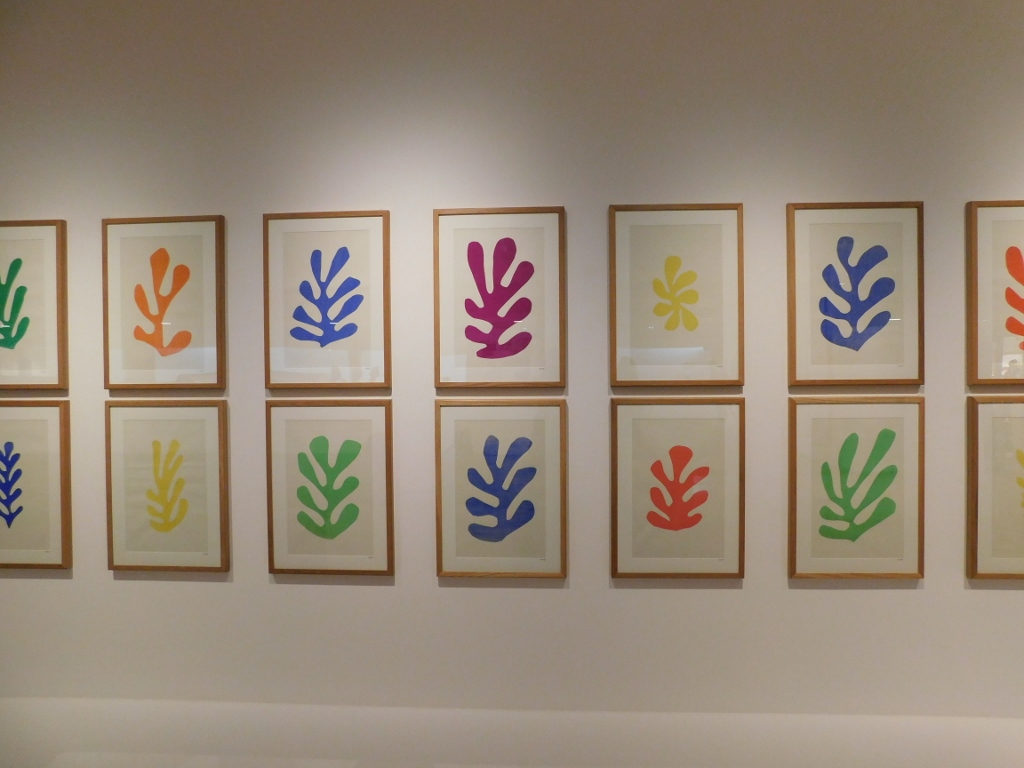 Some of Matisse’s paper collages
Some of Matisse’s paper collages
The Matisse Museum also exhibits two studies for the Tree of Life (L’Arbre de Vie) stained glass. Namely, from 1947 until 1951, Matisse worked on a project for the Rosary Chapel often called Vence Chapel. This is because the Sisters from the Dominican Order from a small place called Vence, some 20 km away from Nice, planned to have a new chapel built and thus they engaged Matisse to do the design for the whole area, including all the wall decorations, stained glass windows, furniture, vestments and liturgical linens. Matisse himself considered this to be his masterpiece. It is possible to get to Vence from Nice using public transportation (with a transfer), but this requires around an hour and a half one way. In the end I did not have the time for this, so the visit to this chapel would have to wait for some future stay at the French Riviera.
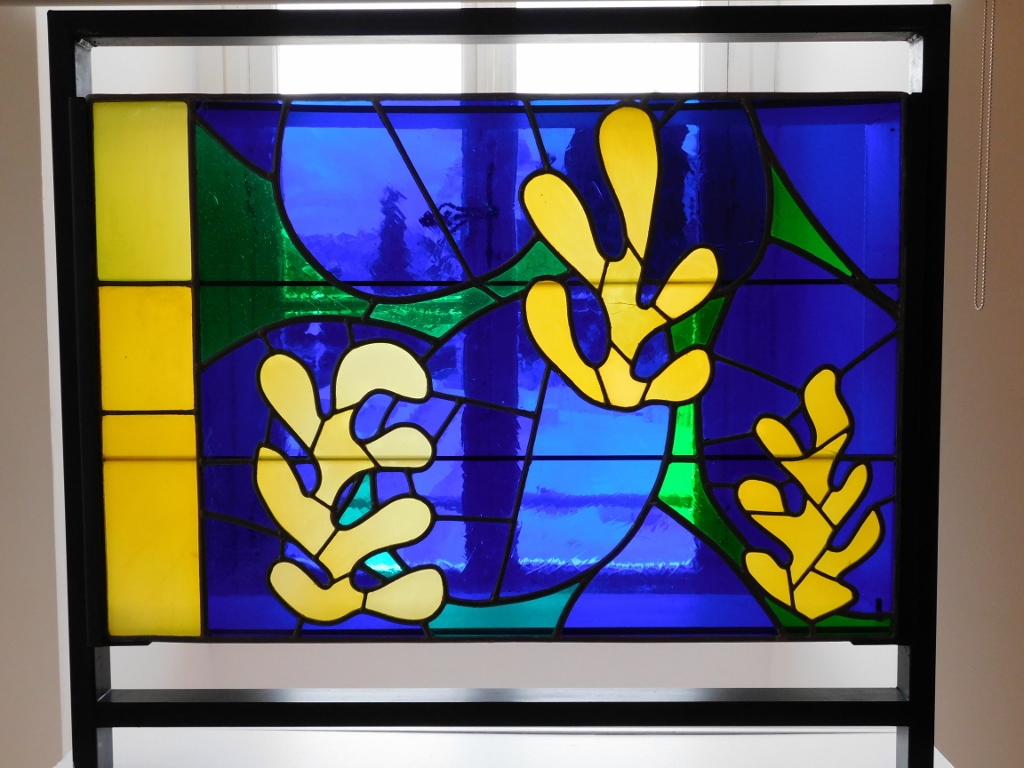 Stained-glass window study for “The Tree of Life”, 1950
Stained-glass window study for “The Tree of Life”, 1950
After the pleasant visit to the Matisse Museum, I headed for the centre of Nice, but this time I followed a different route, first going down to Boulevard de Cimiez. There are several renowned buildings/palaces in this area that are nowadays often used as hotels or buildings with apartments either for sale or for rent, but because of the spacious gardens they are surrounded with, it is more difficult to get good angles for taking photos.
I followed this boulevard to get to the centre of Nice being able to take photos of all sorts of places, certainly less impressive, but more photo-friendly and accessible than the above mentioned. Along the way I passed quite near the Marc Chagall National Museum (Musée National Marc Chagall), but I left the visit to this museum for later. As for the photographs, I was particularly attracted by the wild oranges that decorate some of the streets in Nice. I remember the first time I saw these trees was way back in Athens and I must admit that I could not resist and had to pick an orange and try it. I can report that it was inedible, but it did look lovely. Since then, I have enjoyed in these wild oranges only visually.
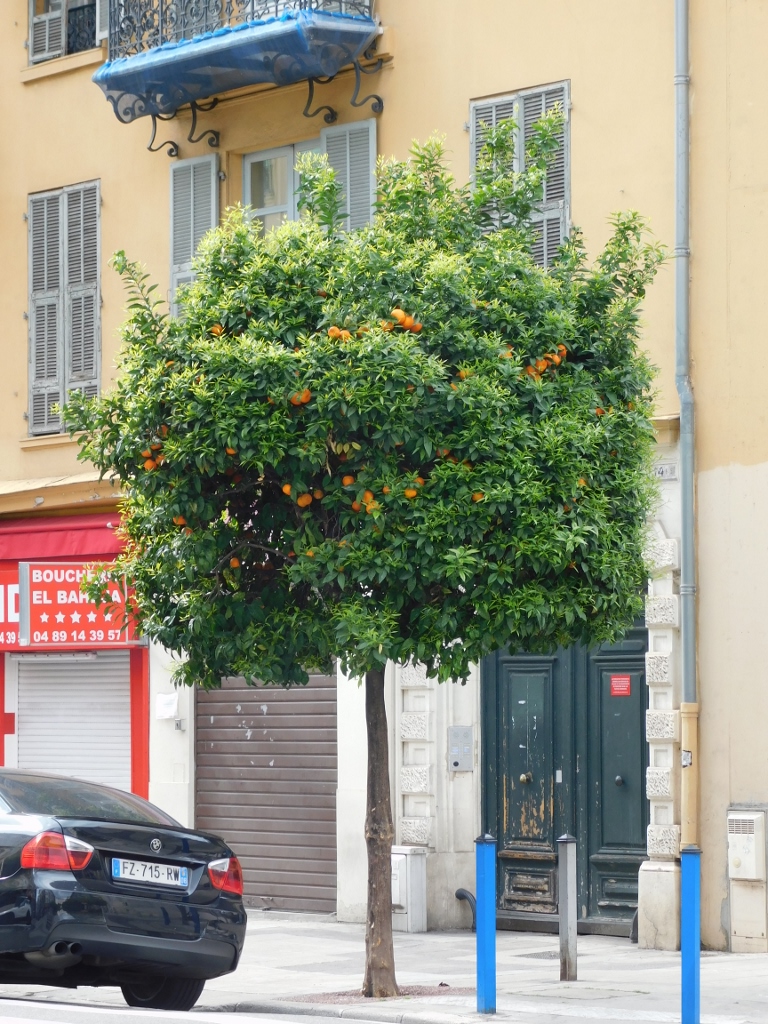 Wild orange tree
Wild orange tree
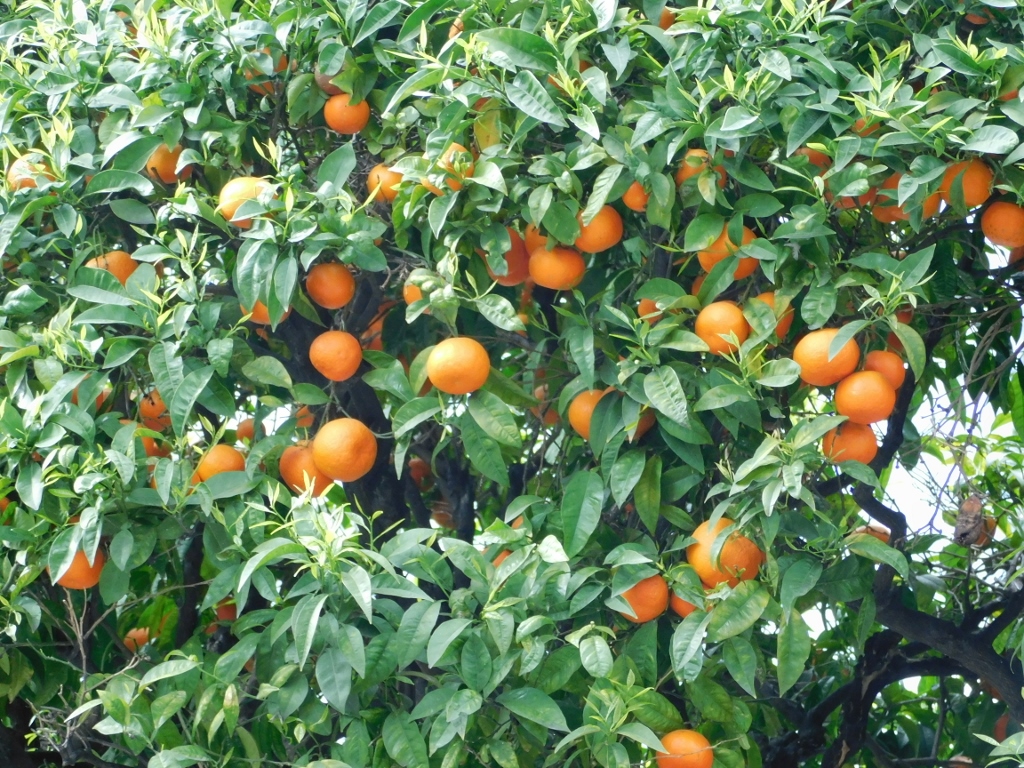 Wild oranges
Wild oranges
By this time I was very tired, so I only had a quick cup of coffee on my way to the flat I had rented in the centre of Nice. I had to have a good rest, since I had quite ambitious plans for the following day.